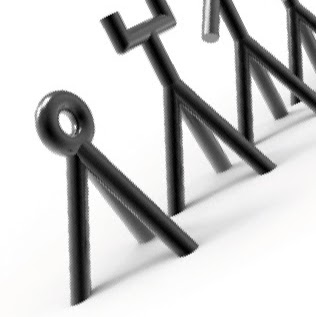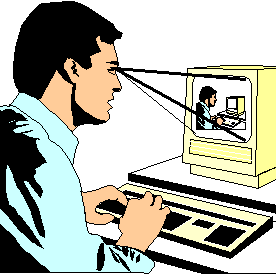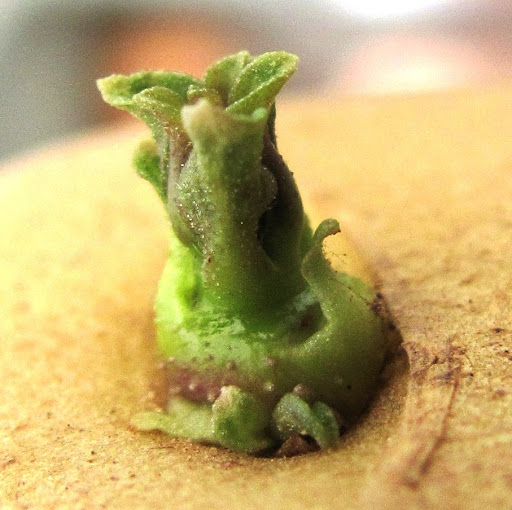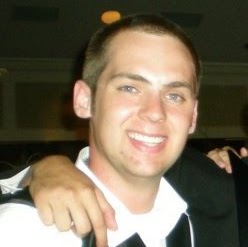Daniel T Wolf
age ~71
from Traverse City, MI
- Also known as:
-
- Daniel Thomas Wolf
- Julie A Wolf
- Daniel J Wolf
- Julie Anne Wolf
- Julia A Wolf
- Julie A Wold
- Julle Wolf
- Juliaa Wolf
- Juliea Wolf
- Phone and address:
-
2858 Ishpeming Trl, Traverse City, MI 49686
2319294573
Daniel Wolf Phones & Addresses
- 2858 Ishpeming Trl, Traverse City, MI 49686 • 2319294573
- Campbell, CA
- West Bloomfield, MI
- Wellston, MI
- Birmingham, MI
License Records
Daniel G Wolf
License #:
E079306 - Active
Category:
Emergency medical services
Issued Date:
Mar 2, 2011
Expiration Date:
Jan 31, 2019
Type:
Kern County EMS Agency
Daniel P Wolf
License #:
E036361 - Active
Category:
Emergency medical services
Issued Date:
Jan 7, 2009
Expiration Date:
Jun 30, 2017
Type:
Los Angeles County FD
Name / Title
Company / Classification
Phones & Addresses
Owner
Sloan Consulting
Business Consulting Services
Business Consulting Services
2858 Ishpeming Trl, Traverse City, MI 49686
2319294545
2319294545
Owner
Dewar, Sloan Research & Planning Group
Management Consulting Services · Accountant
Management Consulting Services · Accountant
141 W State St, Traverse City, MI 49684
2319294545
2319294545
Chairman
Munson Healthcare
General Hospital
General Hospital
PO Box 1188, Traverse City, MI 49685
1105 6 St, Traverse City, MI 49684
2319355000
1105 6 St, Traverse City, MI 49684
2319355000
Bumble LLC
316 Lexington Dr, Menlo Park, CA 94025
WOLF BUILDERS, INC
FIDELITY PROPERTY MANAGEMENT, LLC
Owner
Sigma Research
Commercial Nonphysical Research
Commercial Nonphysical Research
141 W State St, Traverse City, MI 49684
CTO
SPYRUS, Inc.
Computer & Network Security · Mfg Computer Peripheral Equipment Custom Computer Programing Prepackaged Software Services · Computer & Software Stores · Other Computer Peripheral Equipment Manufacturing
Computer & Network Security · Mfg Computer Peripheral Equipment Custom Computer Programing Prepackaged Software Services · Computer & Software Stores · Other Computer Peripheral Equipment Manufacturing
1860 Hartog Dr, San Jose, CA 95131
2355 Oakland Rd, San Jose, CA 95131
Spyrus, San Jose, CA 95131
4083929131, 4089530700, 4089539835
2355 Oakland Rd, San Jose, CA 95131
Spyrus, San Jose, CA 95131
4083929131, 4089530700, 4089539835
Us Patents
-
Handwriting Verification System
view source -
US Patent:40400123, Aug 2, 1977
-
Filed:Apr 28, 1976
-
Appl. No.:5/681118
-
Inventors:Hewitt David Crane - Portola Valley CA
Daniel Errol Wolf - Menlo Park CA
Samuel Lindenberg - Pacific Palisades CA -
Assignee:Stanford Research Institute - Menlo Park CA
-
International Classification:G06K 900
-
US Classification:3401463SY
-
Abstract:Identification of a specimen signature is provided by comparing the specimen with a previously recorded template signature. The comparison is performed by recording, for both specimen and template signatures, signals representing forces in three directions while generating these signatures. For handwritten signatures these forces are called pressure, for the force perpendicular to the plane of the paper, X for the left-right force in the plane of the paper, and Y for the near-far force in the plane of the paper. The recorded specimen signals are divided into equal parts, for example halves, and successive comparisons are made of the equal parts, first without any displacement, then with relative displacements, then by expanding the length of parts relative to one another, then by reducing the length of parts relative to one another, to find the highest correlation values for all of these comparisons. These are combined and compared with a reference.
-
Dynamic Re-Creation Of Signatures
view source -
US Patent:41569113, May 29, 1979
-
Filed:Nov 18, 1975
-
Appl. No.:5/633032
-
Inventors:Hewitt D. Crane - Portola Valley CA
Daniel E. Wolf - Menlo Park CA -
Assignee:Stanford Research Institute - Menlo Park CA
-
International Classification:G06K 500
G06K 900 -
US Classification:364419
-
Abstract:In order to verify the authenticity of the signature of an individual, first a sample signature is written with a pen which can generate electrical signals representative of the forces exerted in the plane of the paper in the process of writing. These signals are sampled and then scaled so that the signature when displayed, can be fitted within a predetermined display area. The scaled signals generated from the sample signature are then stored. When it is desired to compare the sample signature with a signature which is subsequently written, called a specimen signature, the specimen signature is written and is processed for display in the same manner as was the sample signature. The scaled sample signature signals are then called out of storage and displayed, as are the scaled signals generated in the course of writing the specimen signature. Any deviations between the signatures are very readily detectable by observing the display.
-
Wafer Cleaning System
view source -
US Patent:63083698, Oct 30, 2001
-
Filed:Feb 24, 2000
-
Appl. No.:9/511775
-
Inventors:Alejandro Garcia - Union City CA
Brent Krick - Mountain View CA
Anthony Nichtawitz - Lima, PE
Daniel Nordeen - Boulder Creek CA
Josh Oen - Fremont CA
Kenneth Smith - Cupertino CA
Vincent Suro - Sunnyvale CA
Daniel Wolf - San Jose CA -
Assignee:Silikinetic Technology, Inc. - Fremont CA
-
International Classification:B08B 104
-
US Classification:15230
-
Abstract:A wafer cleaning apparatus provides two opposed brushes for brushing a vertically disposed wafer in a tank which can contain a process liquid. A pressure controller adaptively controls the pressure exerted by the brushes on the wafer to compensate for brush wear. Rim driving wheels engage the wafer periphery with a porous jacket coupled to a fluid delivery system, thereby simultaneously rotating and cleaning the periphery of the wafer. The apparatus includes a fluid delivery system for separately and independently delivering a plurality of constituents of a cleaning solution to the brushes, thereby ensuring that a freshly mixed cleaning solution reaches the wafer. The tank can be filled with a process liquid through which megasonic waves provided by a transducer can propagate and impinge upon the wafer thereby enhancing the cleaning of the wafer or the brushes.
-
Handwriting Verification System Using Landmarks
view source -
US Patent:40865673, Apr 25, 1978
-
Filed:Aug 20, 1976
-
Appl. No.:5/716344
-
Inventors:Hewitt David Crane - Portola Valley CA
Daniel Errol Wolf - Menlo Park CA -
Assignee:Stanford Research Institute - Menlo Park CA
-
International Classification:G06K 900
-
US Classification:3401463SY
-
Abstract:When signals derived from a template signature are to be compared directly with signals derived from a specimen signature, because no two signatures are alike, there is a requirement for providing a certain degree of "rubberiness" between the specimen and template signals. Previously such rubberiness was achieved by breaking the signal up into fixed portions and then conducting translation, stretch and contraction between these fixed portions in the course of the comparison. In this invention, advantage is taken of the existence of prominent landmarks in the template and specimen signatures, and the signatures are broken up between these landmarks for the purpose of achieving rubberiness and/or translation. The landmarks in the signals derived from the signatures to be compared are exactly aligned before the correlation process is undertaken.
-
Identification By Handwriting Verification
view source -
US Patent:40400107, Aug 2, 1977
-
Filed:Nov 6, 1975
-
Appl. No.:5/629290
-
Inventors:Hewitt D. Crane - Portola Valley CA
Daniel E. Wolf - Menlo Park CA
John S. Ostrem - Menlo Park CA -
Assignee:Stanford Research Institute - Menlo Park CA
-
International Classification:G06K 900
-
US Classification:3401463SY
-
Abstract:A person, who is to have his identity verified, first writes his signature or any other appropriate group of characters or symbols several times with a special pen which produces signals representative of the writing forces in the plane of the paper and the writing pressure. From these a number of different parameters are derived. These parameters may be, for example, average value, energy, timing, number of zero crossings, etc. Average values and standard deviations are obtained for each of these parameters and these are stored as components of a template vector. In order to detect whether or not a later handwriting sample is authentic, a measure of the difference between the template vector and the later handwriting sample vector is calculated. The distinction between true signatures and forgeries is then made on the basis of this difference. If it is less than an appropriately selected value the signature is judged authentic while if it is above such value it is judged a forgery.
-
Wafer Cleaning Method And System
view source -
US Patent:60702842, Jun 6, 2000
-
Filed:Jul 10, 1998
-
Appl. No.:9/113703
-
Inventors:Alejandro Garcia - Union City CA
Brent Krick - Mountain View CA
Anthony Nichtawitz - Lima, PE
Daniel Nordeen - Boulder Creek CA
Josh Oen - Fremont CA
Kenneth Smith - Cupertino CA
Vincent Suro - Sunnyvale CA
Daniel Wolf - San Jose CA -
Assignee:Silikinetic Technology, Inc. - Fremont CA
-
International Classification:A47L 102
-
US Classification:15102
-
Abstract:A wafer cleaning apparatus provides two opposed brushes for brushing a vertically disposed wafer in a tank which can contain a process liquid. A pressure controller adaptively controls the pressure exerted by the brushes on the wafer to compensate for brush wear. Rim driving wheels engage the wafer periphery with a porous jacket coupled to a fluid delivery system, thereby simultaneously rotating and cleaning the periphery of the wafer. The apparatus includes a fluid delivery system for separately and independently delivering a plurality of constituents of a cleaning solution to the brushes, thereby ensuring that a freshly mixed cleaning solution reaches the wafer. The tank can be filled with a process liquid through which megasonic waves provided by a transducer can propagate and impinge upon the wafer thereby enhancing the cleaning of the wafer or the brushes.
-
Signal Train Verification System Using Landmarks
view source -
US Patent:41908201, Feb 26, 1980
-
Filed:Apr 21, 1978
-
Appl. No.:5/898997
-
Inventors:Hewitt D. Crane - Portola Valley CA
Daniel E. Wolf - Menlo Park CA -
Assignee:Stanford Research Institute International - Menlo Park CA
-
International Classification:G06K 900
-
US Classification:3401463SG
-
Abstract:When trains of signals, derived from a written template signature, are to be compared directly with trains of signals, derived from a written specimen signature, because no two written signatures are identical, there is a requirement for providing a certain degree of "rubberiness" between the specimen and template signals. Previously, such rubberiness was achieved by breaking up the trains of signals into fixed portions and then conducting translation, stretch and contraction between these fixed portions in the course of the comparison. In this invention, advantage is taken of the existence of prominent landmarks in the trains of signals of the template and specimen signatures. The trains of signals are broken into segments by these landmarks. Segments of the specimen are stretched or contracted and translated to match corresponding segments of the template, to greatly simplify and enhance correlation process.
-
Dynamic Creation Of Signatures
view source -
US Patent:43441351, Aug 10, 1982
-
Filed:Sep 7, 1978
-
Appl. No.:5/940434
-
Inventors:Hewitt D. Crane - Portola Valley CA
Daniel E. Wolf - Menlo Park CA -
Assignee:Stanford Research Institute - Menlo Park CA
-
International Classification:G06K 500
G06K 900 -
US Classification:364419
-
Abstract:In order to verify the authenticity of the signature of an individual, first a sample signature is written with a pen which can generate electrical signals representative of the forces exerted in the plane of the paper in the process of writing. These signals are sampled and then scaled so that the signature when displayed, can be fitted within a predetermined display area. The scaled signals generated from the sample signature are then stored. When it is desired to compare the sample signature with a signature which is subsequently written, called a specimen signature, the specimen signature is written and is processed for display in the same manner as was the sample signature. The scaled sample signature signals are then called out of storage and displayed, as are the scaled signals generated in the course of writing the specimen signature. Any deviations between the signatures are very readily detectable by observing the display.
Medicine Doctors

Daniel E. Wolf
view sourceSpecialties:
Psychiatry, Addiction Psychiatry
Work:
Daniel E Wolf DO
6537 35 Ave SW, Seattle, WA 98126
2069329292 (phone), 2069329797 (fax)
6537 35 Ave SW, Seattle, WA 98126
2069329292 (phone), 2069329797 (fax)
Education:
Medical School
Philadelphia College of Osteopathic Medicine
Graduated: 1979
Philadelphia College of Osteopathic Medicine
Graduated: 1979
Conditions:
Anxiety Dissociative and Somatoform Disorders
Anxiety Phobic Disorders
Attention Deficit Disorder (ADD)
Bipolar Disorder
Depressive Disorders
Anxiety Phobic Disorders
Attention Deficit Disorder (ADD)
Bipolar Disorder
Depressive Disorders
Languages:
English
Description:
Dr. Wolf graduated from the Philadelphia College of Osteopathic Medicine in 1979. He works in Seattle, WA and specializes in Psychiatry and Addiction Psychiatry.

Daniel J. Wolf
view sourceSpecialties:
Dermatology
Work:
Skin & Cancer Associates
2100 E Hallandale Bch Blvd STE 100, Hallandale, FL 33009
9544541066 (phone), 9544564025 (fax)
2100 E Hallandale Bch Blvd STE 100, Hallandale, FL 33009
9544541066 (phone), 9544564025 (fax)
Education:
Medical School
New York University School of Medicine
Graduated: 1981
New York University School of Medicine
Graduated: 1981
Conditions:
Acne
Contact Dermatitis
Dermatitis
Plantar Warts
Psoriasis
Contact Dermatitis
Dermatitis
Plantar Warts
Psoriasis
Languages:
English
Spanish
Spanish
Description:
Dr. Wolf graduated from the New York University School of Medicine in 1981. He works in Hallandale Beach, FL and specializes in Dermatology. Dr. Wolf is affiliated with Aventura Hospital Medical Center.

Daniel A. Wolf
view sourceSpecialties:
Optometry
Work:
Eyecare Management LLCQuantum Vision Centers
408 W 2 St, Centralia, IL 62801
6185325531 (phone), 6185326706 (fax)
Quantum Vision Center
3000 Broadway St, Mount Vernon, IL 62864
6182424141 (phone), 6182426567 (fax)
Quantum Vision Centers
103 Clintonian Plz STE 103, Breese, IL 62230
6185267447 (phone), 6185267455 (fax)
408 W 2 St, Centralia, IL 62801
6185325531 (phone), 6185326706 (fax)
Quantum Vision Center
3000 Broadway St, Mount Vernon, IL 62864
6182424141 (phone), 6182426567 (fax)
Quantum Vision Centers
103 Clintonian Plz STE 103, Breese, IL 62230
6185267447 (phone), 6185267455 (fax)
Procedures:
Ophthalmological Exam
Languages:
English
Description:
Dr. Wolf works in Mount Vernon, IL and 2 other locations and specializes in Optometry. Dr. Wolf is affiliated with Crossroads Community Hospital, Memorial Hospital, Saint Marys Good Samaritan Inc Centralia Campus and St Josephs Hospital - Breese.

Daniel J Wolf
view sourceSpecialties:
Dermatology
MOHS-Micrographic Surgery
MOHS-Micrographic Surgery
Education:
New York University (1981) Dermatology
Lawyers & Attorneys

Daniel Scott Wolf - Lawyer
view sourceLicenses:
Virginia - Authorized to practice law 2004
Specialties:
Insurance - 34%
Litigation - 33%
Commercial - 33%
Litigation - 33%
Commercial - 33%

Daniel Wolf - Lawyer
view sourceISLN:
902662597
Admitted:
1979
University:
St. Mary's College, B.A., 1976
Law School:
University of Minnesota, J.D., 1979

Daniel Wolf - Lawyer
view sourceOffice:
Paul, Weiss, Rifkind, Wharton & Garrison LLP
ISLN:
921290634
Admitted:
2011
University:
University of Rochester, B.A.
Law School:
University of Pennsylvania Law School, J.D.

Daniel Wolf - Lawyer
view sourceOffice:
Law Office of Daniel Wolf
Specialties:
Employment Law
Civil Rights
Human Rights
Complex Federal Litigation
Civil Rights
Human Rights
Complex Federal Litigation
ISLN:
902662641
Admitted:
1987
University:
Northwestern University, B.A., 1982
Law School:
University of Michigan, J.D., 1986
Googleplus

Daniel Wolf
Work:
Universidad de Palermo - Coordinador Académico (2003)
Education:
Universidad de Buenos Aires - Maestría en Docencia Universitaria, Universidad de Buenos Aires - Docente Autorizado, Universidad de Buenos Aires - Diseño Industrial
About:
Coordinador Académico Área Productos y Objetos. Diseño Industrial, Mobiliario y Joyas. Facultad de Diseño y Comunicación. Universidad de Palermo.
Tagline:
UNIVERSIDAD DE PALERMO. BS.AS. ARGENTINA

Daniel Wolf
Work:
This Think Tank - Water Stuff (2012)
Chicago Multinational Corporate Headquarters - GIS laborer (2011-2011)
Chicago Multinational Corporate Headquarters - GIS laborer (2011-2011)
Education:
University of North Carolina at Asheville - Environmental Studies, University of Illinois at Chicago - Geospatial Analysis and Visualization

Daniel “The Wang” Wolf
Work:
Self-Employed - Sandwich Dragon (1987)
About:
I write epic poetry.
Tagline:
I'm Gheed!
Bragging Rights:
It's really powerful.

Daniel Wolf
Work:
Pros Revenue Management - Business Expert (2010)
Education:
University of Arkansas - Information Systems

Daniel Wolf
Work:
General Electric - Security
Securitas AB - Security
Securitas AB - Security
Education:
University of Nevada, Reno - Psychology

Daniel Wolf
Work:
Freelancer
Education:
Yes
Tagline:
The way I see it

Daniel Wolf
Education:
Columbia College Chicago - Film Directing, Deerfield High School

Daniel Wolf
Work:
Ich SELBST - SCHEFFE (9)
Tagline:
Do some shit an see what happens, you just have to have enough shit going on, that some BIG shit happens ;)
Youtube
Get Report for Daniel T Wolf from Traverse City, MI, age ~71





